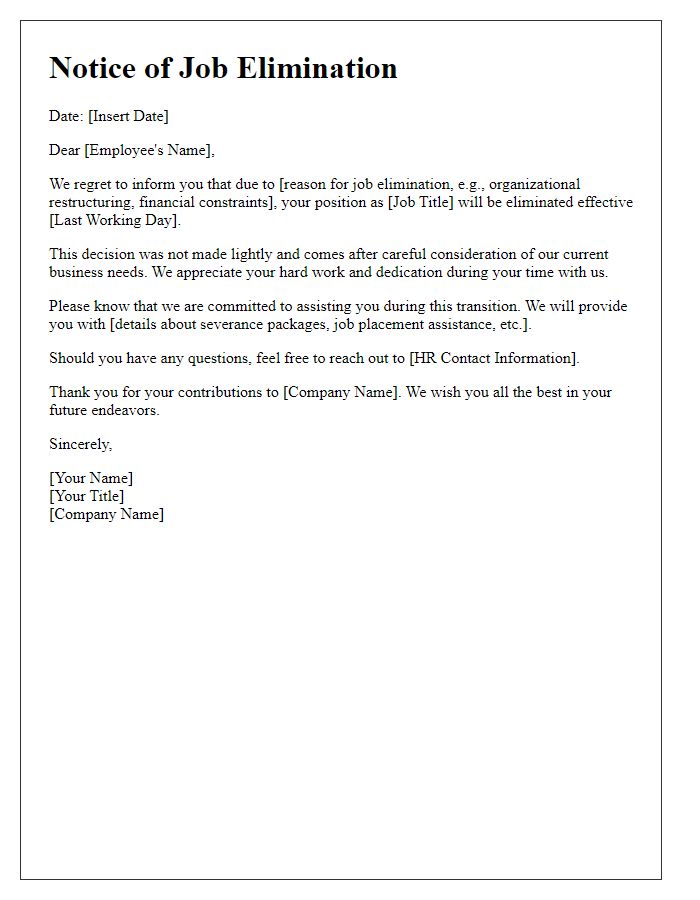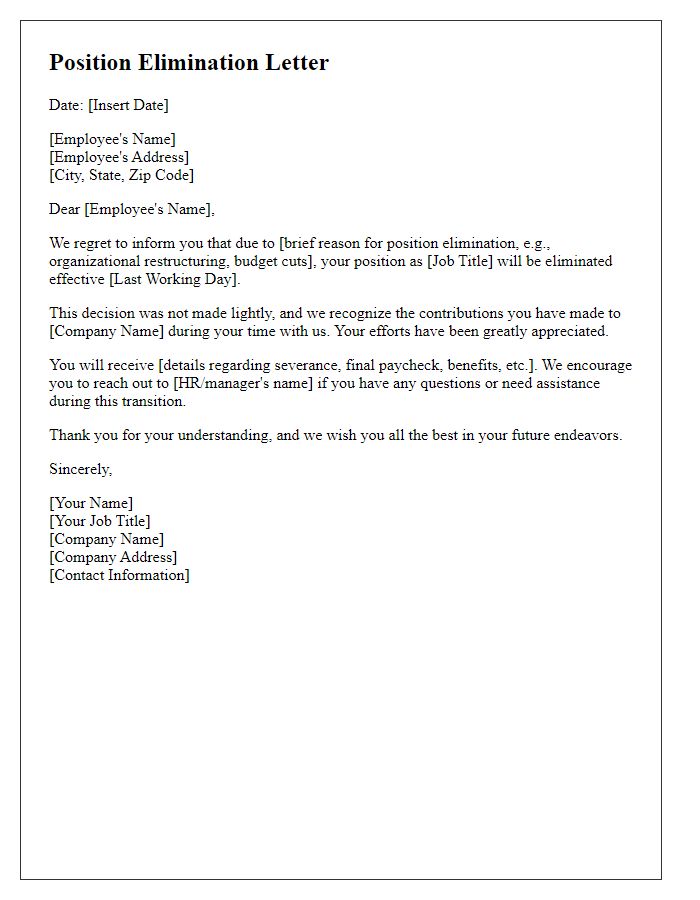In today's ever-changing business landscape, organizations are sometimes faced with the difficult decision to implement a reduction in force. This process can be challenging for everyone involved, creating uncertainty and concern among employees. It's essential to communicate these changes thoughtfully and transparently, ensuring that all parties understand the rationale and next steps. If you're looking for guidance on crafting the perfect reduction in force notice, keep reading to explore helpful templates and tips!

Clear Subject Line
Reduction in Force Notice: Important Update Regarding Employment Status This reduction in force notice informs impacted employees about the workforce reduction measures enacted by the company due to significant changes in market conditions. The decision, affecting approximately 15% of the workforce nationwide, arises from a decline in revenue projections and shifts in operational priorities. All affected employees will receive severance packages calculated based on years of service, and they will be given access to career transition resources to assist in job placement. The corporate headquarters, located in New York City, will communicate further details about the timeline and specific next steps in the upcoming days. This process aligns with the strategic plan to ensure the long-term sustainability of the organization amidst evolving industry challenges.
Compassionate Language
In a difficult decision affecting employees at XYZ Corporation, management has made the heartbreaking choice to implement a reduction in force. This decision, impacting approximately 10% of the workforce, stems from recent economic challenges faced by the company, including a 20% decline in revenue over the past year. Employees in various departments, including marketing and operations, will be notified individually. The company will provide severance packages, including two weeks of pay per year of service. Additionally, counseling services will be available to assist those affected during this transition period. Management expresses deep gratitude for the contributions made by all employees and acknowledges the personal impact this situation has on individuals and families.
Reason for Reduction
Reduction in force often arises due to various business challenges. Economic downturns may lead to decreased revenue, prompting companies to cut costs. Technological advancements can result in automation, reducing the need for certain positions, as seen in many manufacturing sectors. Changes in consumer demand shift focus, requiring downsizing in specific departments. Furthermore, strategic restructuring efforts aimed at improving operational efficiency often necessitate workforce reductions. It is crucial for organizations to communicate these reasons effectively to maintain transparency and trust.
Impacted Positions and Benefits Information
Mass layoffs significantly impact employees across various sectors. The reduction in force (RIF) can affect dozens of positions, ranging from administrative roles in corporate offices to specialized technicians in manufacturing plants. Affected employees may face significant uncertainty regarding health insurance options, severance packages, and unemployment benefits, which can vary by state. These layoffs often coincide with economic downturns, such as the recession experienced in 2020, or restructuring efforts within a company aiming to streamline operations. Human Resources departments typically provide detailed notifications, outlining the timeline and resources available to assist impacted staff members during this challenging transition period.
Contact Information for Further Assistance
Reduction in force notifications often involve sensitive situations, requiring clear communication. Employees facing termination may seek clarity regarding their benefits and rights. Contact information, such as Human Resources email and phone numbers, is critical for employees to obtain assistance and guidance. Additionally, an employee assistance program (EAP) hotline may offer counseling services for emotional support during this transition. Providing external resources, such as local job placement agencies or online job search platforms, can further aid affected employees in finding new employment opportunities. Professional organizations and networking groups within the industry may also provide valuable connections and job search strategies.













Comments